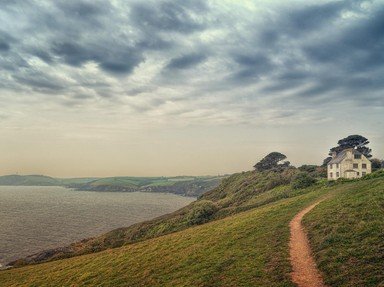Quiz Answer Key and Fun Facts
1. At which Somerset town does the coastal path begin its route?
2. We continue travelling west; from which small Somerset village does one of the steepest hills in England rise?
3. The path now leads us to another village; the only one in England with an exclamation mark in its name - which village?
4. Continuing to the south-west, we travel towards a castle believed to be the birthplace of the legendary King Arthur. Where are we heading?
5. Located barely a mile offshore, what type of building can be seen rising from Carn Bras Rock?
6. We round the Lizard Peninsula and find ourselves in the town of Helston in the midst of an unusual ceremony. Which ceremony?
7. During its heyday in the 1920s and 1930s a hotel on this small Devon island, Drake's Island, was popular with the celebrities of the period.
8. The ancient Torre Abbey building in Torquay was used to hold who, or what, in 1588?
9. Many of England's finest buildings have been built using stone quarried on the south Dorset island of Portland.
10. Toward the eastern end of the coastal path, we pass a rock formation, famous the world over. By what name is this formation known?
Source: Author
SisterSeagull
This quiz was reviewed by FunTrivia editor
spanishliz before going online.
Any errors found in FunTrivia content are routinely corrected through our feedback system.
